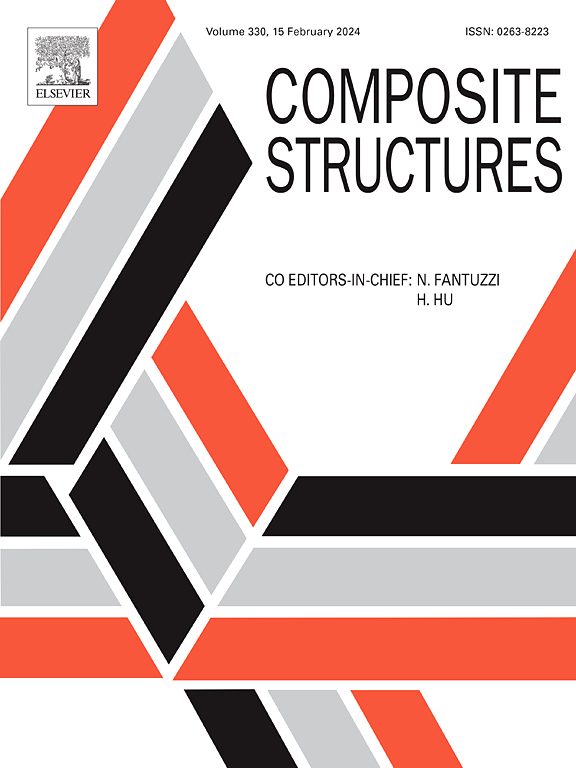Mode I delamination propagation of thermoplastic composite laminate at different temperatures: Experimental and numerical simulation
IF 6.3
2区 材料科学
Q1 MATERIALS SCIENCE, COMPOSITES
引用次数: 0
Abstract
Thermoplastic composites, appreciated for their lightweight, high specific strength, excellent energy absorption, and crash resistance, are gaining popularity in aerospace, automotive, and marine industries. High-temperature environments can lead to the degradation of inter-laminar stresses and component performance. To assure the credible application of thermoplastic composites during service environments, an in-depth analyze of the relationship between the inter-laminar properties and temperature is essential. In this study, the effect of temperature on the process of delamination propagation in thermoplastic composite structures was analyzed by performing delamination propagation tests of double cantilever beam (DCB) at different temperatures. The results show that temperature has an important effect on fracture toughness, delamination propagation rate, delamination propagation resistance curve (R-curve), and the number of fiber bridges. The bridging traction at the interface of the thermoplastic composite plate decreases with increasing temperature. The fracture toughness were reduced by 67.5%, 72.4% and 85.1% at temperatures of 40℃, 60℃ and 80℃, respectively, compared to the room temperature. Finally, the obtained traction-separation relationship was integrated into trilinear cohesive zone mode considering the effect of temperature. The numerical results were agreement with the experimental results, evidencing that the proposed trilinear cohesive zone mode was suitable for modeling the delamination propagation of thermoplastic composite laminates at high temperatures.
求助全文
约1分钟内获得全文
求助全文
来源期刊

Composite Structures
工程技术-材料科学:复合
CiteScore
12.00
自引率
12.70%
发文量
1246
审稿时长
78 days
期刊介绍:
The past few decades have seen outstanding advances in the use of composite materials in structural applications. There can be little doubt that, within engineering circles, composites have revolutionised traditional design concepts and made possible an unparalleled range of new and exciting possibilities as viable materials for construction. Composite Structures, an International Journal, disseminates knowledge between users, manufacturers, designers and researchers involved in structures or structural components manufactured using composite materials.
The journal publishes papers which contribute to knowledge in the use of composite materials in engineering structures. Papers deal with design, research and development studies, experimental investigations, theoretical analysis and fabrication techniques relevant to the application of composites in load-bearing components for assemblies, ranging from individual components such as plates and shells to complete composite structures.
 求助内容:
求助内容: 应助结果提醒方式:
应助结果提醒方式:


